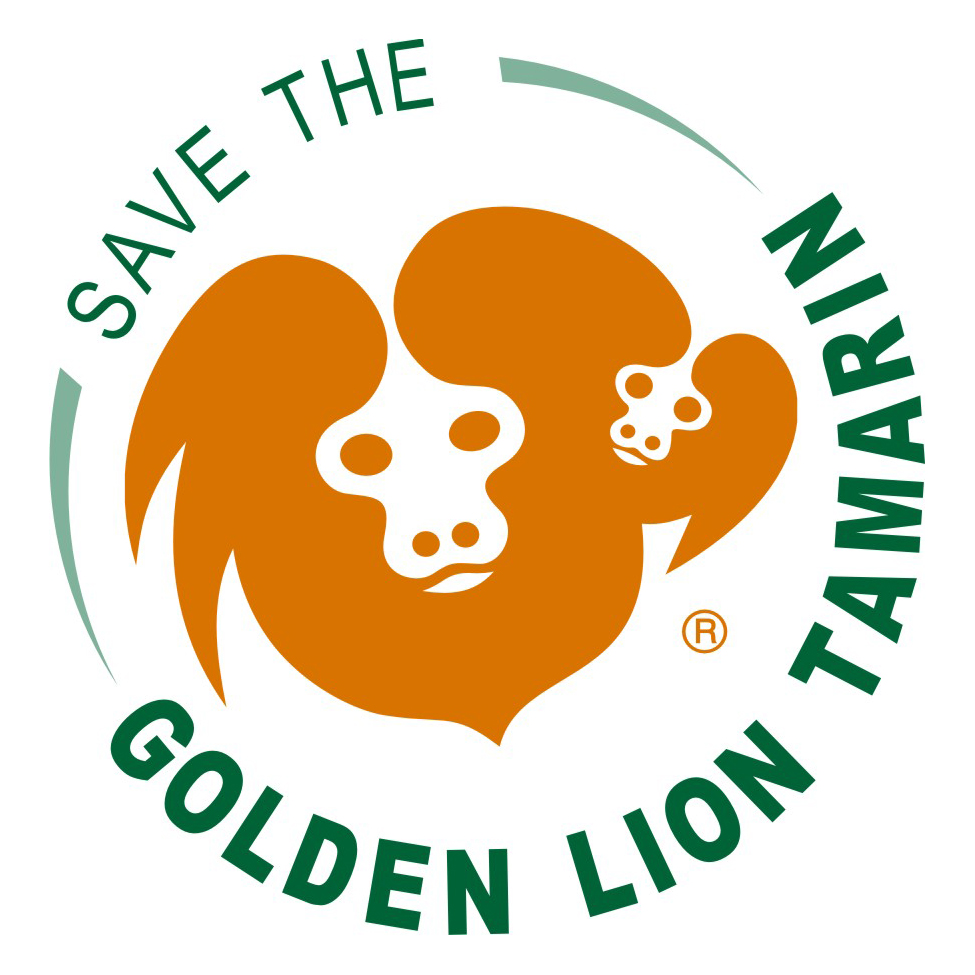Population census shows 31% increase in wild GLTs
Adult golden lion tamarin carrying two newborn infants. Photo credit: Andréia Martins/AMLD
A recent census to survey the population of golden lion tamarins in the Atlantic Coastal Forest of the state of Rio de Janeiro, Brazil, shows the total number of GLTs has risen to 4,800. This represents a 90% increase after a 2016-2019 yellow fever outbreak reduced the population to 2,500 — a loss of nearly a third of all wild GLTs.
The new census also shows a 31% increase over a pre-yellow fever estimate of 3,700 in 2014. The censuses occurred in and around the São João River Basin, the remaining stronghold for the species.
Those involved in the most recent field survey, which took place between March 2022 and January 2023, are encouraged by this population growth, noting it provides evidence that forest connectivity was vital for the recovery of these small primates after the 2016-2019 yellow fever outbreak.
The Associação Mico-Leão-Dourado (AMLD) Forest Restoration Program alone was responsible for reforesting 208 hectares — or about 514 acres — between 2014 and 2022. The forest restoration program helped consolidate and connect several isolated blocks of GLT habitat that made significant strides toward achieving a science-based goal of 25,000 hectares (61,776 acres) of connected forest, a large enough block to maintain a genetically and demographically healthy population and keep the species from extinction.
According to this recent census estimate, all populations that were reduced by yellow fever in 2017-2018 have fully or partially recovered, and none became extinct.
“I was thrilled and relieved to learn that the reduced tamarin populations bounced back so quickly. They must have received immigrants from adjacent connected forest fragments, as we had hoped,” said James Dietz, a conservation biologist who is vice president and founding director of the U.S.-based Save the Golden Lion Tamarin.
These most recent population findings are significant given that in the 1970s, when the critical status of the species became public, only about 200 individuals were thought to remain in the wild. Over the past five decades, great efforts to increase the population have been made, not only by Brazilian-based Associação Mico-Leão-Dourado (AMLD) and SGLT, but also by the Brazilian government, national and foreign institutions, zoos, and the local community.
Conservation efforts for this species include reintroducing zoo-born GLTs into the wild, creating protected areas, strengthening local community engagement, restoring forests and planting corridors to connect isolated forest islands, establishing wildlife crossings over the BR-101 highway, social communication efforts, among others initiatives. In addition, AMLD is vaccinating GLTs against yellow fever with a goal of at least 500, a number experts say is adequate to allow species survival if the next yellow fever epidemic is even more severe than the last.
Although conservationists said they are encouraged by the results of the recent census, the species is still under threat. The yellow fever crisis demonstrated the vulnerability of the species. Diseases and other catastrophes can especially affect populations that are small and isolated due to habitat fragmentation.
And even though the targeted number of tamarins and forested areas has been reached, these individuals are restricted to blocks of forest that are not large enough to hold AMLD’s science-based goal of 2,000 GLTs in connected forest. Planting forest to connect forest fragments and expand GLT habitat remains a priority for conservation of the species.
“The recent figures released by AMLD and its scientists of the new census of the golden lion tamarin population bring us hope. Everyone who works to protect biodiversity knows how difficult it is to achieve good results and how precious they are,” said Luís Paulo Ferraz, executive director of AMLD.
“We would like to thank very much all partners, donors, individuals and institutions who make it possible to do this work. We invite more people to help this effort,” Ferraz said. “There is a long-term plan, and it cannot be discontinued. Together we will be able not only to save the golden lion tamarin but also the amazing biodiversity of the Atlantic Forest.”

